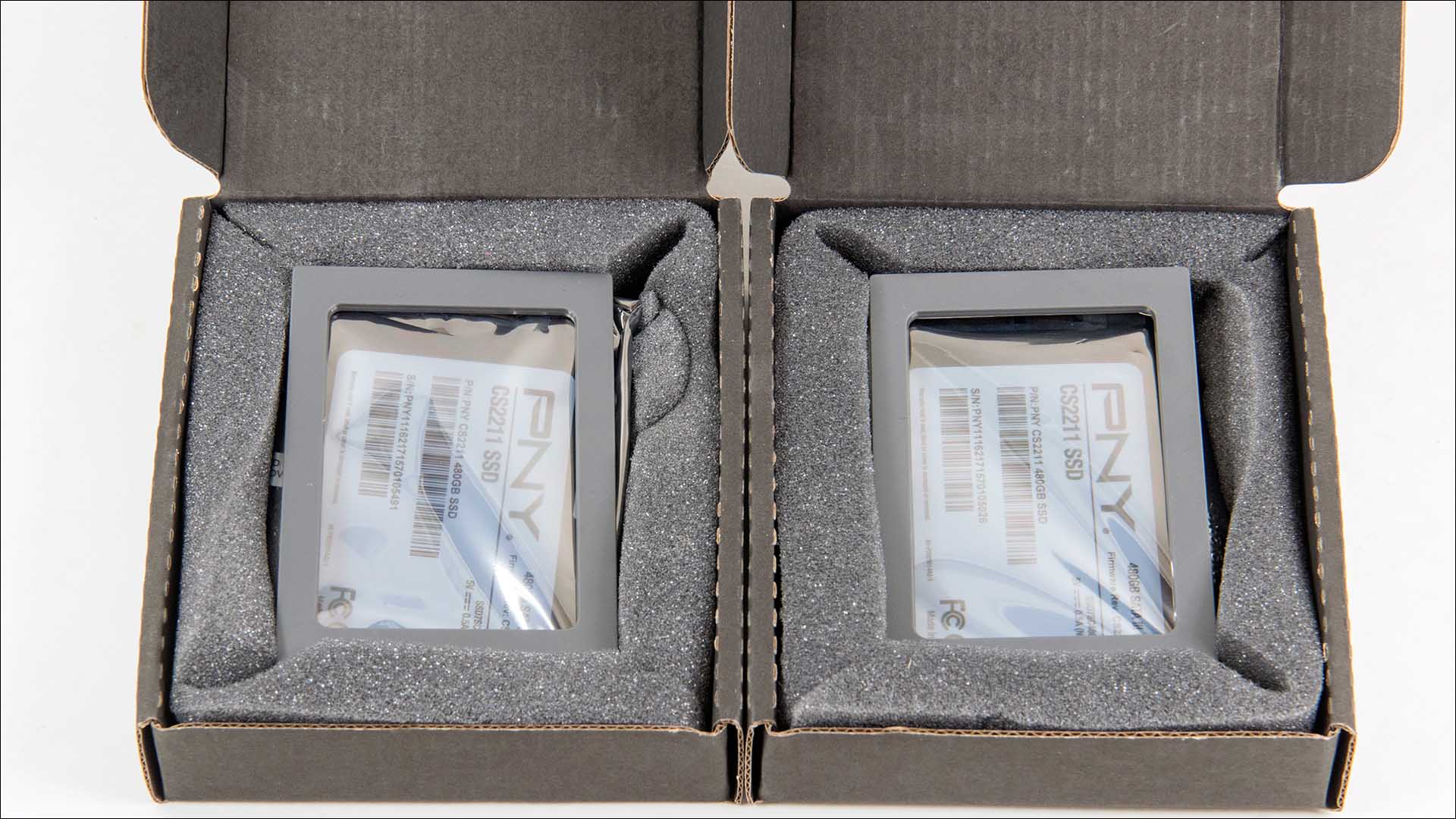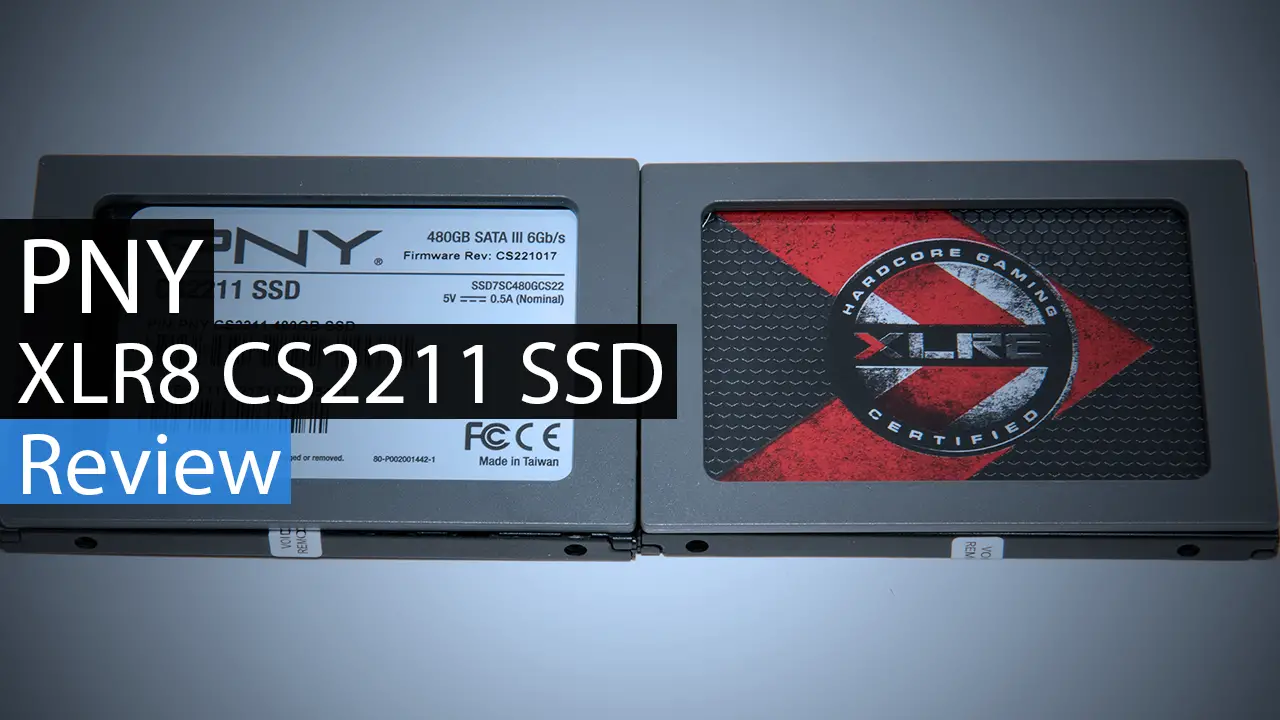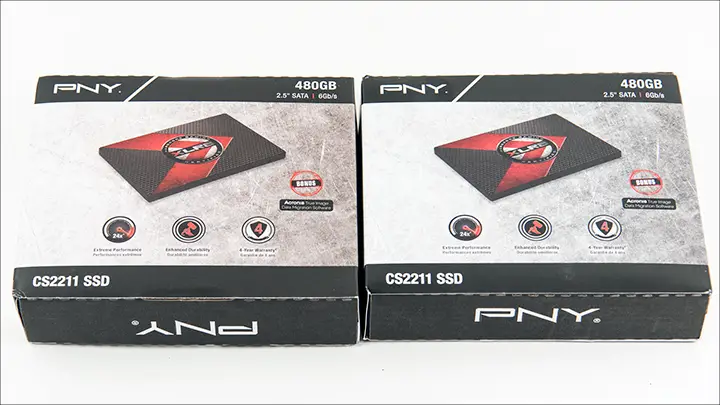The exterior of the PNY XLR8 CS2211’s shipping container is rather interesting. While it may not be any larger than the typical 2.5″ form-factor SSD shipping container it is rather attention getting. Some of this is because of the large full color image of the PNY XLR8 CS2211 that is on the front, but mostly it is the black and white color scheme that will help it stand out when on store shelves. In either case it is a pretty looking box.

When you open up this shipping container you will see that PNY has not opted for the bog-standard plastic clamshell packaging / protective inner case. Instead you will find the PNY XLR8 CS2211 nestled in the middle of a lot of soft foam and ensconced in a anti-static bag. This last bit is getting harder and harder to find and it is nice to see that PNY is taking Electro-Static ‘shock’ damage seriously. We just all SSDs still came with this extra level of protection.
Moving on the PNY XLR8 CS2211 itself is an incredibly striking and attractive looking SSD. Instead of the boring silver that seems to have become all the rage with most manufactures PNY has actually taken the time to paint it a nice flat black. This flat/matte black does contrast nicely with the large sticker that covers nearly the entirety of the top of this drive.
Equally impressive is PNY has not only included a 2.5mm adapter bracket (so this 7mm Z-height drive can be properly installed in 9.5mm enclosures) but the dark gray does further accentuate the looks of this drive. Put simply this is one pretty looking drive.
However, looks are all well and fine but most people are much more concerned with how a drive performs rather than how it looks. By cracking open the case (and voiding the warranty) consumers will find a very well laid out PCB that is about 3/4″ the length of the interior space. While we would have liked to have seen a full length PCB this 3/4 length is very common with PHISON drives. Put another way it really does not matter.
What may matter however is the fact that PNY has not included any heat pads for the various components. This is a lost opportunity as it would have turned the all metal chassis into a large heatsinks. In testing and extended use the drive never did get hot so this will not concern most people. However, if you live in a extremely hot climate you may want to consider active cooling so as to ensure the drive does not get too hot.
Taking a closer look you can see that PNY has opted for eight 128Gbit Toshiba Toggle Mode NAND ICs. These ICs are some of the best to be found on the market and have powered many ‘enthusiast’ solid state drives since their inception.
Backstopping this excellent NAND and controller is a DDR3 256Mb Kingston branded RAM IC. While PNY could have included a second RAM IC only the largest 960GB model really needs that big a RAM buffer.

Before moving on the PHISON S10 controller does require a bit of explanation as this controller is rather unique in how it does things. Firstly, it is a quad-core based design that allocates the majority of these cores for internal house cleaning and only a minority for real time requests. This is radically different than most controllers which simply use spare processing cycles on a catch as catch can basis for internal house cleaning. This is why the PHISON S10 can boast such great extended performance. The only downside is that in short burst synthetic tests the results will appear lower than some of the competition as they literally use 100% of the core’s cycles for I/O requests. As such this drive is a grower not a shower.














